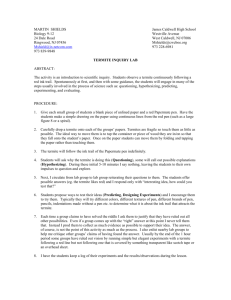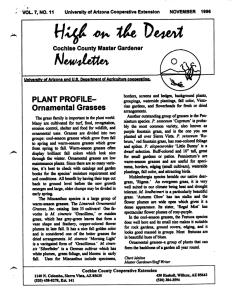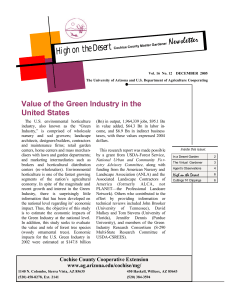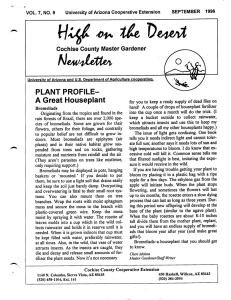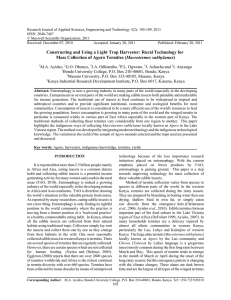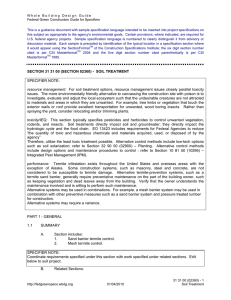scie nce ne ws.o rg
advertisement
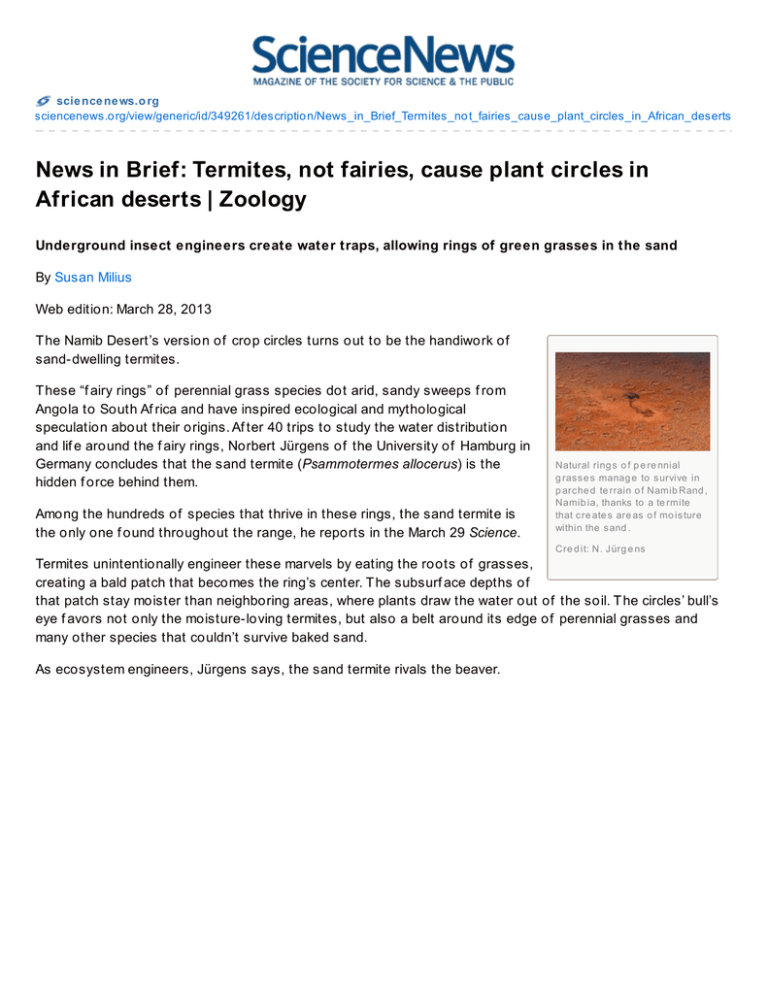
scie nce ne ws.o rg ://www.sciencenews.o rg/view/generic/id/349261/descriptio n/News_in_Brief_Termites_no t_fairies_cause_plant_circles_in_African_deserts News in Brief: Termites, not fairies, cause plant circles in African deserts | Zoology Underground insect engineers create water traps, allowing rings of green grasses in the sand By Susan Milius Web edition: March 28, 2013 T he Namib Desert’s version of crop circles turns out to be the handiwork of sand-dwelling termites. T hese “f airy rings” of perennial grass species dot arid, sandy sweeps f rom Angola to South Af rica and have inspired ecological and mythological speculation about their origins. Af ter 40 trips to study the water distribution and lif e around the f airy rings, Norbert Jürgens of the University of Hamburg in Germany concludes that the sand termite (Psammotermes allocerus) is the hidden f orce behind them. Among the hundreds of species that thrive in these rings, the sand termite is the only one f ound throughout the range, he reports in the March 29 Science. Natural ring s o f p e re nnial g ras s e s manag e to s urvive in p arc he d te rrain o f Namib Rand , Namib ia, thanks to a te rmite that c re ate s are as o f mo is ture within the s and . Cre d it: N. J ürg e ns Termites unintentionally engineer these marvels by eating the roots of grasses, creating a bald patch that becomes the ring’s center. T he subsurf ace depths of that patch stay moister than neighboring areas, where plants draw the water out of the soil. T he circles’ bull’s eye f avors not only the moisture-loving termites, but also a belt around its edge of perennial grasses and many other species that couldn’t survive baked sand. As ecosystem engineers, Jürgens says, the sand termite rivals the beaver.


